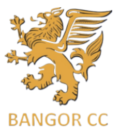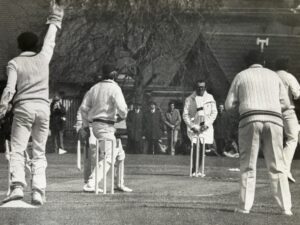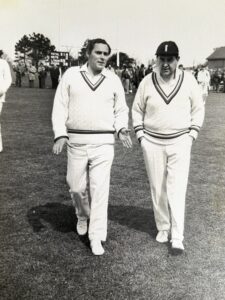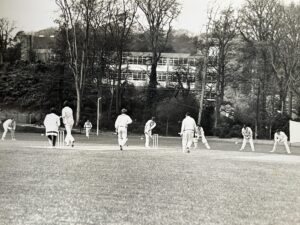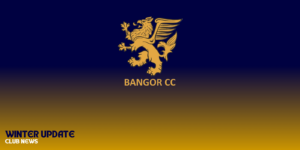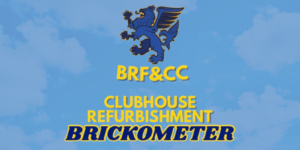The Early Years
5 min read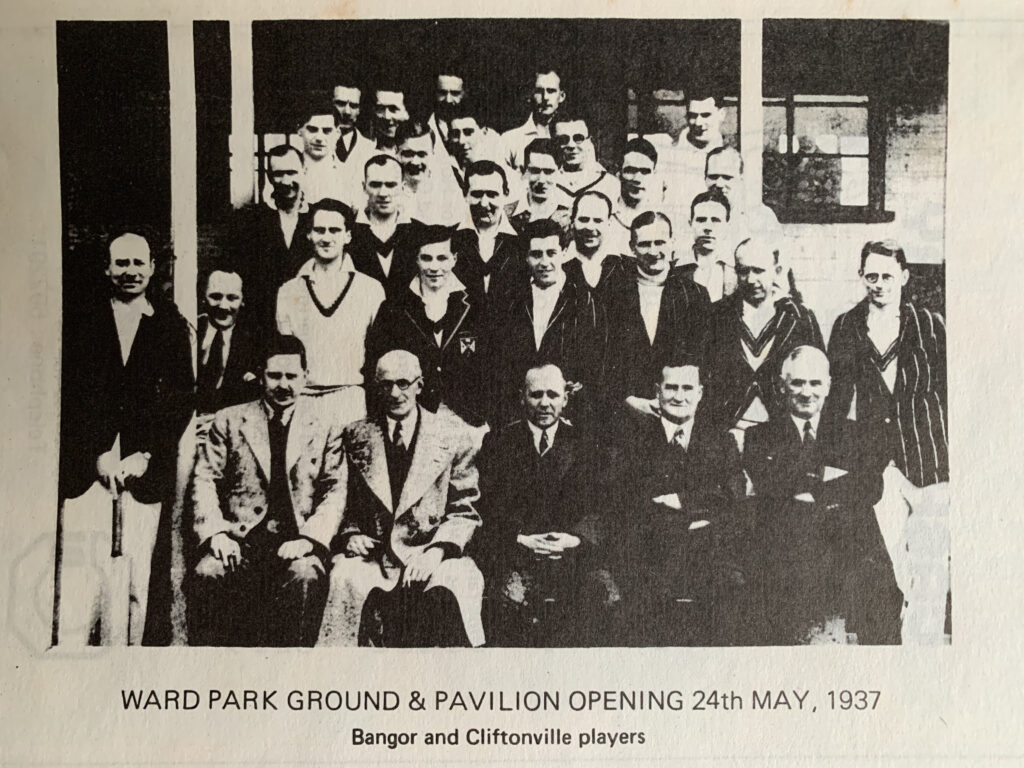
by Michael Rea in 1977
There is evidence of Cricket being played in 1911 under the captaincy of a George Taylor and the ground was apparently on the Brunswick Road, but details are however very scarce and it was not until 1933 that the Bangor Cricket Club was formally constituted. The first match was actually played on the 6 May in that year in Ward Park against Barnsley in the Qualifying League. It was not an auspicious start, Bangor made 25 and Barnsley won by 9 wickets. The only comment I can trace on the match was the fact that it rained but the tea was excellent.
The team that played on that occasion was — Marshall, Dailey, Cowzer, Vining, Magrath, Gebbie, Page, McMurray, Reynolds, Rea and Skelton. The Captain was the late Bob Marshall who for many years was President of the Club and who indeed until his death a few years ago was a regular attender at all Bangor matches. The first victory in the League did not take place until 24th June 1933, and on this occasion Bangor defeated Clorinda by 5 runs.
In those days the wicket in Ward Park was anything but a batsman’s paradise and indeed because of the state of the ground the Northern Cricket Union who even then were considered to be a rather autocratic body relegated Bangor to a lower League. The Officials of the Club in 1933 were as follows —
| Patrons | The Most Hon. The Marquis of Dufferin and Ava Viscount Castlereagh. Capt. Rt. Hon. H. H. Mulholland, M.P. | |
| President | The Mayor of Bangor – Alderman W. J. Bradley. | |
| Chairman | R. M. Marshall. | |
| Hon. Secretary | P. A. Dailey. | |
| Hon. Treasurer | J. Mateer | |
| Captain | 1st XI R. M. Marshall 2nd XI R. L. Magrath |
In this first season Bangor finished with 33,33% in the League recording 2 wins and a draw out of 7 matches played. In the 2nd Division of the Qualifying League the 2nd XI finished 4th with 50% recording 3 wins out of 6 matches played. The batting averages were topped by J. M. Page with 214 runs at an average of 15.3 and the bowling averages were headed by F. W. McMurray with average most remarkable statistics of 187 overs, 44 maidens, 360 runs and 57 wickets at an average of 6.3.
The relegation of the Club was a serious blow but in 1934 the Club distinguished themselves by winning the Junior League under the captaincy of Bob Marshall and again the statistics were dominated by F. W. McMurray, whose bowling average was even an improvement on the previous year. In the 1934 season he bowled 143 overs, 62 maidens, and 63 wickets for 217 runs at an average of 3.44. He also topped the batting averages with a total aggregate runs of 233 at an average of 16.6. These were obviously happy days and it is interesting to read some of the Press reports in the Bangor Spectator of those years when the Cricket Correspondent was a gentleman by the name of Willie “Zip” Rea. To illustrate that things have not changed a great deal the following extract from one of his reports in 1934 makes interesting reading —
Some Faults – The Bangor fielding was bad. Fieldsmen not keeping their feet together to Cover hands and their returns to the wicket too lady-like. Their batting was of the elementary type, from about No. 7 downwards. I did not see the opening of the Bangor innings. I arrived at the interval to see M’Grath and Craig batting. They were doing very well indeed until Craig tried the “cow shot” and was bowled. This young man possesses a natural bent for the game. He should perfect a straight bat first and then natural strokes will follow. His partner M’Grath gave a very good lesson on the value of close-watching the ball and pushing the perpendicular bat at it. He was the only one of his side to get double figures. The one player I can’t understand is Cowzer. He usually goes out and makes one glorious do-or-die blind swipe, sees his stumps disarranged and comes back satisfied. Why this player does not adopt an upstanding stance and practice a straight bat beats me.
The pleasure of winning the League in 1934 was somewhat diminished when the N.C.U. refused to grant promotion because of the condition of the ground and the Club then temporarily removed to the Lacrosse Grounds in Newtownards where thanks to the help of John Russell they were able to have the use of the facilities at this venue. This obviously meant that every match was virtually an away fixture and it is interesting that in those days the Club subsidized travel to Newtownards. The return bus fare from the Tonic Cinema was tenpence and each Saturday this was the meeting point for the Club sides. Some noteable events took place during the Club’s days in Newtownards, the first centuries were scored by Herbie Rea against Ballymena 2nds on 18th May 1935, and by John Rawlings on the 1st June, 1935 against St. Simon’s. John Pedlow also made a century in the same year against Wesleyan Rec. on 8th June. In this year the Club also won the Intermediate Cup defeating Ophir by 204 runs to 68.
On the 29th June in the same year Cecil Holsworth took 10 wickets for 6 runs for the 2nd XI against Albert Foundry 2nds at Springfield Road, Belfast. It is also interesting that in the same year to celebrate Jubilee Day, Monday 6th May, Derry Cricket Club travelled to Newtownards to play Bangor and of course this was the era when E.D.R. Shearer was Captain of the Derry XI. Special buses left the Bangor Railway Station to cater for the large number of cricket enthusiasts and as part of the celebrations a Carnival Flannel Dance was held in the British Legion Hall, Hamilton Road, when the music was, I discover, provided by Miss Kitty ivory and her Dance Band.
In 1936 the playing fields in Ward Park were extended and this meant a new cricket pitch being laid in addition to the erection of a suitable pavilion. This meant that Bangor officially came home in 1937 and to mark the occasion a game was played against Cliftonville. The Club were now fielding a “A” XI as well as 1st and 2nd XI s and whilst the A team played friendly matches it is as interesting to see from the Fixture Card of that year that they had no fewer than 30 matches. The 1st XI were in the Qualifying League Section C which they won under the captaincy of John Rawlings whilst the 2nd XI played in the 2nd Division of the League Section C. During this period in the Club’s history Bob Marshall a tremendous part in the running of the cricket in the town and two founder members, Bob Magrath and Jimmy Barbour were subsequently to maintain their interest in the Club for many years. This was a very successful era in Bangor Cricket and with the Club getting stronger each year it was unfortunate that the development was interrupted by the outbreak of war in 1939. In this year however the 2nd XI had their first success when they won the Minor Cup.
Whilst cricket was continued during the war years it did so on a reduced scale. In 1940 the Firsts won Qualifying League Section B and in 1944 the Club had one of its outstanding moments when it won the Junior Cup defeating N.I.C.C. 2nds at Holywood by one wicket.
